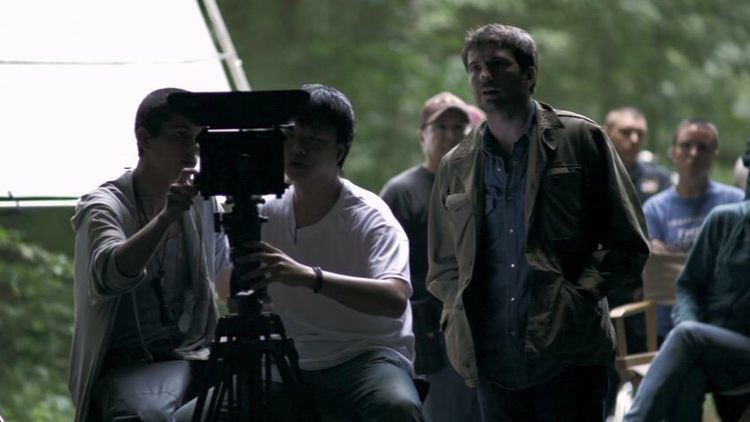

Here’s my capsule review, from 2006, of “The Shooting”: There’s little pleasure to be derived, for instance, from the leaden dialogue-Steven Gaydos’s script fits together superbly but strains to give the characters anything to say-yet Hellman’s reflexive modernism, a sleek insulation for burning passions, is the very image of joyful artistic idealism in the face of bitter worldly wisdom.

It’s not an off-Hollywood film, it’s a part-Hollywood film, and, like many hybrids, its parts fit together uneasily. The silently energetic opacity of the Hollywood icons and neo-icons whose hard-edged wisdom informs Hellman’s films has little to do with the loose, documentary-centric performance style of younger directors’ micro-budgeted films yet, for “Road to Nowhere,” Hellman clearly had trouble getting actors as charismatic and as intense as his own directorial presence. In the film-within-a-film of “Road to Nowhere,” the camera is the size of the palm of the hand, but there are trailers on location to which actors withdraw between takes, and they complain to their agents when their part changes in the course of the shoot. “Road to Nowhere,” unlike the spate of micro-budgeted films that have been the jewels of the recent independent cinema, is made by a director with Hollywood experience and Hollywood wiles. (I’ve never seen his 1978 Western, “China 9, Liberty 37.”) From then on, he’s had trouble getting films made and released, which is a terrible shame-he’s simply one of the finest directors of his generation. He worked on the margins of Hollywood, getting his start as a director in the sixties on a pair of low-budget Westerns, “Ride in the Whirlwind” and “The Shooting,” starring Jack Nicholson his most famous film is “Two-Lane Blacktop,” from 1971 his adaptation of “Cockfighter,” which screens tomorrow night at Film Society of Lincoln Center along with a première of “Road to Nowhere”-an event at which Hellman will speak-is a fine, hard-bitten Southern noir, adapted from a novel by Charles Willeford. Hellman is in an odd position his film falls between stools, as does his own career. He shows the shady hangers-on with mixed motives who float around behind the scenes and both infuse a film with authenticity and endanger it he shows the reckless mysteries and secrets that make for an actor’s alluring screen presence he symbolizes, in a framing device of a devastating poignancy, the agony of his constrained artistic activities. Hellman shows how Haven makes a film (itself called “Road to Nowhere”) about a financial scandal and a couple of related murders, in which the actress (with whom Haven falls in love) may have some involvement with the true story on which it’s based. Whatever else “Road to Nowhere” is, it’s a paean to the art of the cinema-and to the raw, violent relations of love and power on which the cinema is built. Civit, seem wet, as if captured with paints that haven’t yet dried, and Hellman’s shots taken on location of the film-within-the-film, in which the flip-out screen of the little SLR camera is in frame, doubling the action along with the performances taking place in front of it, have a quiet cinematic ecstasy, a tight-lipped creative intensity of a rare exaltation. The images of “Road to Nowhere,” thanks to the cinematographer Josep M.
#Road to nowhere movie movie#
Times, Hellman said that the movie “would have been expensive, had people gotten paid.”) (In a recent interview with Kevin Thomas in the L. Anthony writes that the production overseen by Haven-the making of the film-within-the-film-“looks hopelessly amateur.” In fact, it’s the very image of the production of Hellman’s “Road to Nowhere,” which was shot with a DSLR (in other words, a tiny camera that doesn’t at all look like a movie camera or even like a video camera), with a very spare crew, very little added lighting-and, of course, very little budget.


 0 kommentar(er)
0 kommentar(er)
